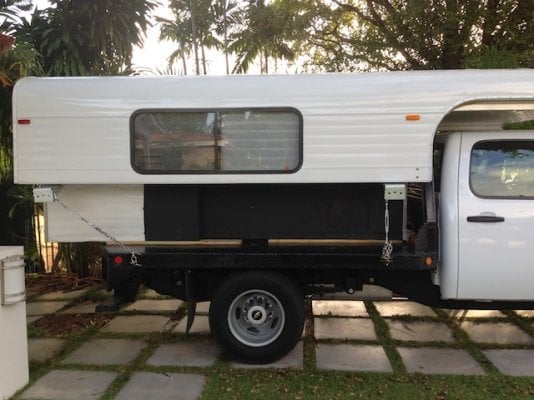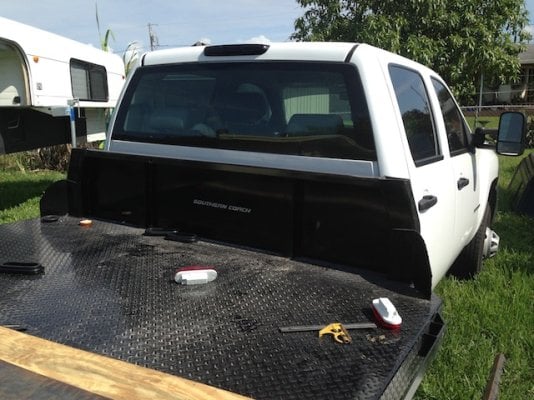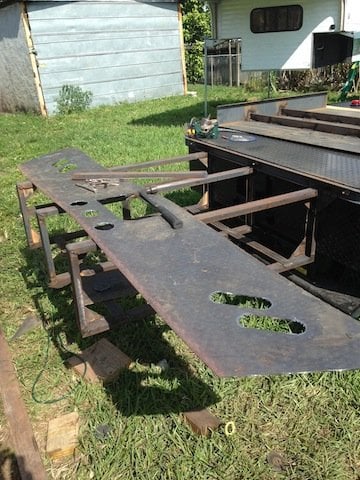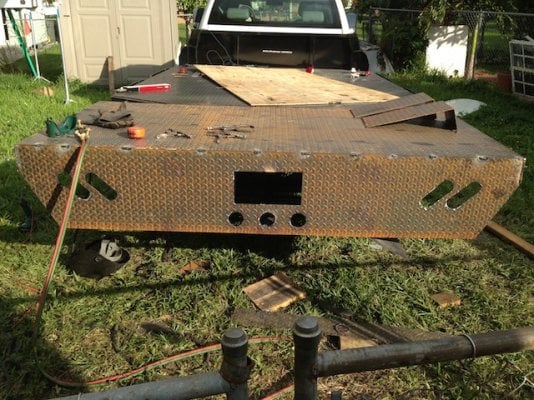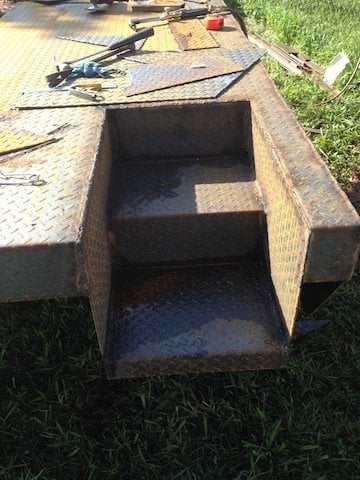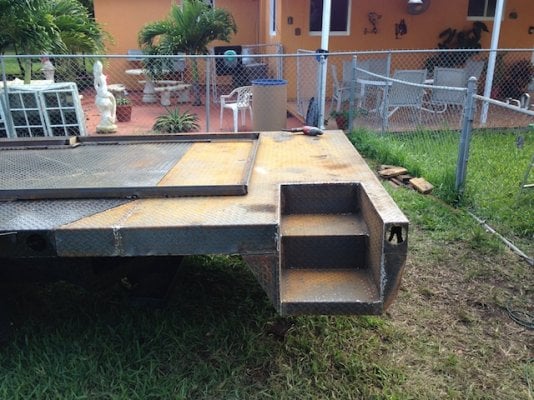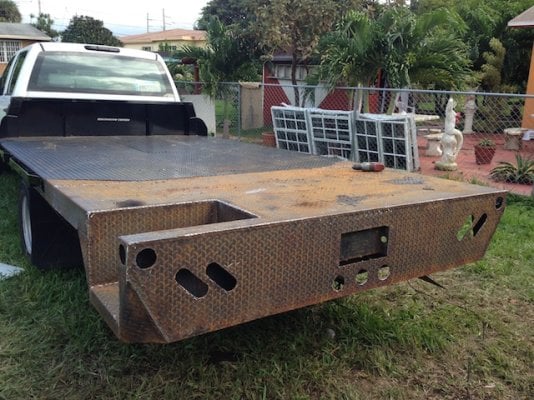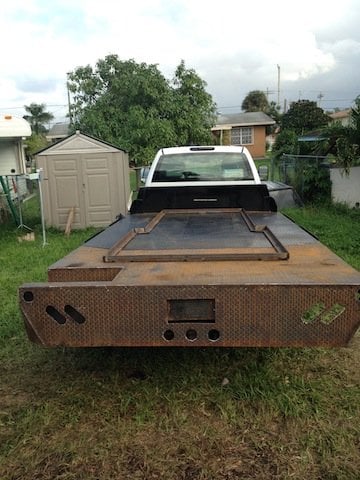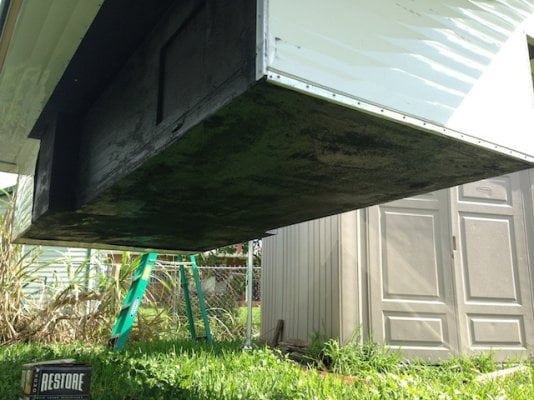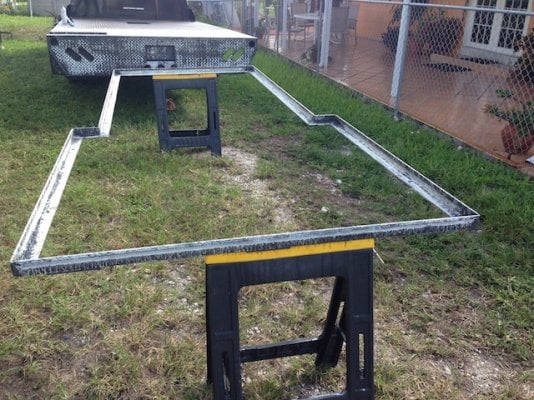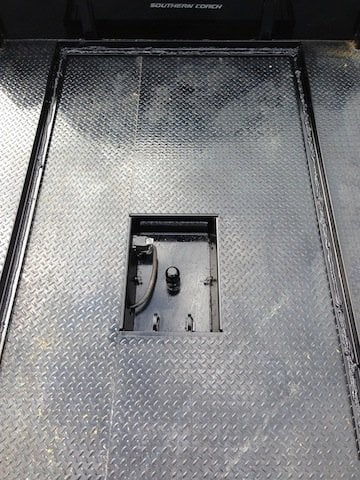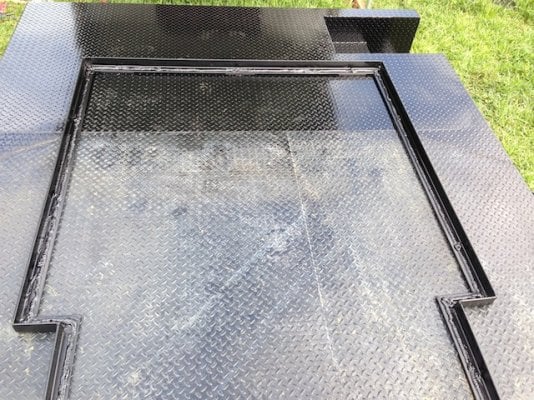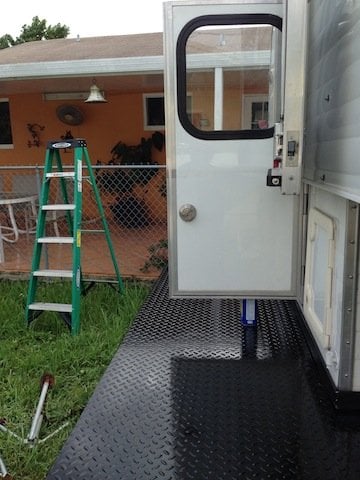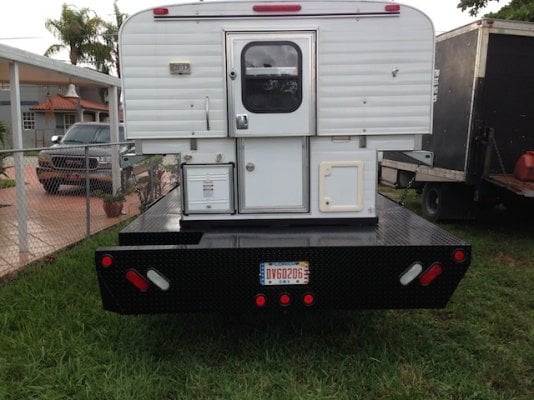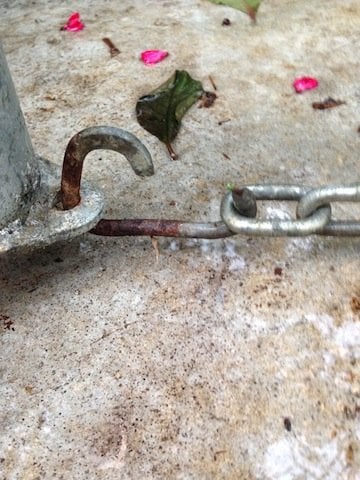BluesideUp
Senior Member
This pic explains my rationale, if that's possible. I really did not want to buy new and had my eye on two used 8.5 's, one in Montana and the other in Idaho which would have worked on the 9'.4" flatbed with a swing rear spare tire mount. But then there were ladder issues
The 11' was in Kentucky and a day away from Georgia, a lot more convenient so I made an offer which the owner accepted. Original March 2010 invoice from Alaskan was $28,422
That meant I had to build a 2 ' extension and with a tire rack I would be close to 3' and still needed to hang a couple of bikes so I just decided to go 4', the tire goes underneath, a13" inch deck to get in or out of the Camper with 2 steps street side etc.
A little Rube Goldberg but….
The 11' was in Kentucky and a day away from Georgia, a lot more convenient so I made an offer which the owner accepted. Original March 2010 invoice from Alaskan was $28,422
That meant I had to build a 2 ' extension and with a tire rack I would be close to 3' and still needed to hang a couple of bikes so I just decided to go 4', the tire goes underneath, a13" inch deck to get in or out of the Camper with 2 steps street side etc.
A little Rube Goldberg but….

